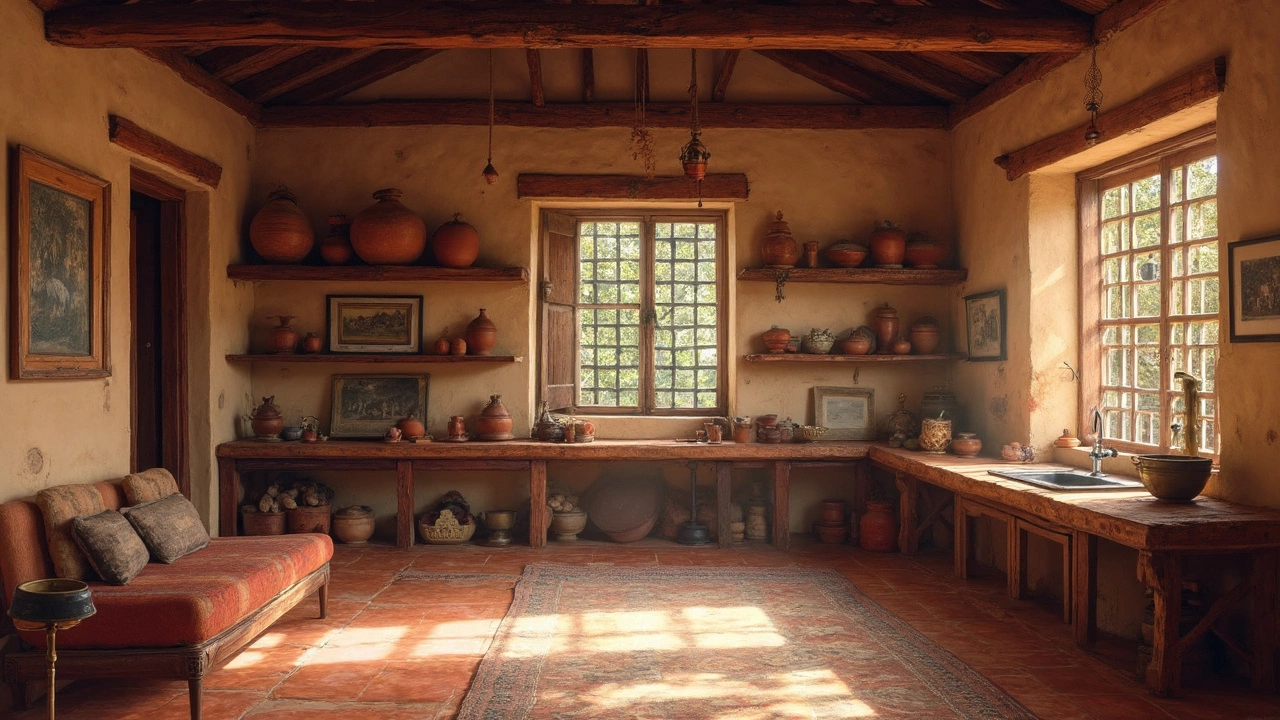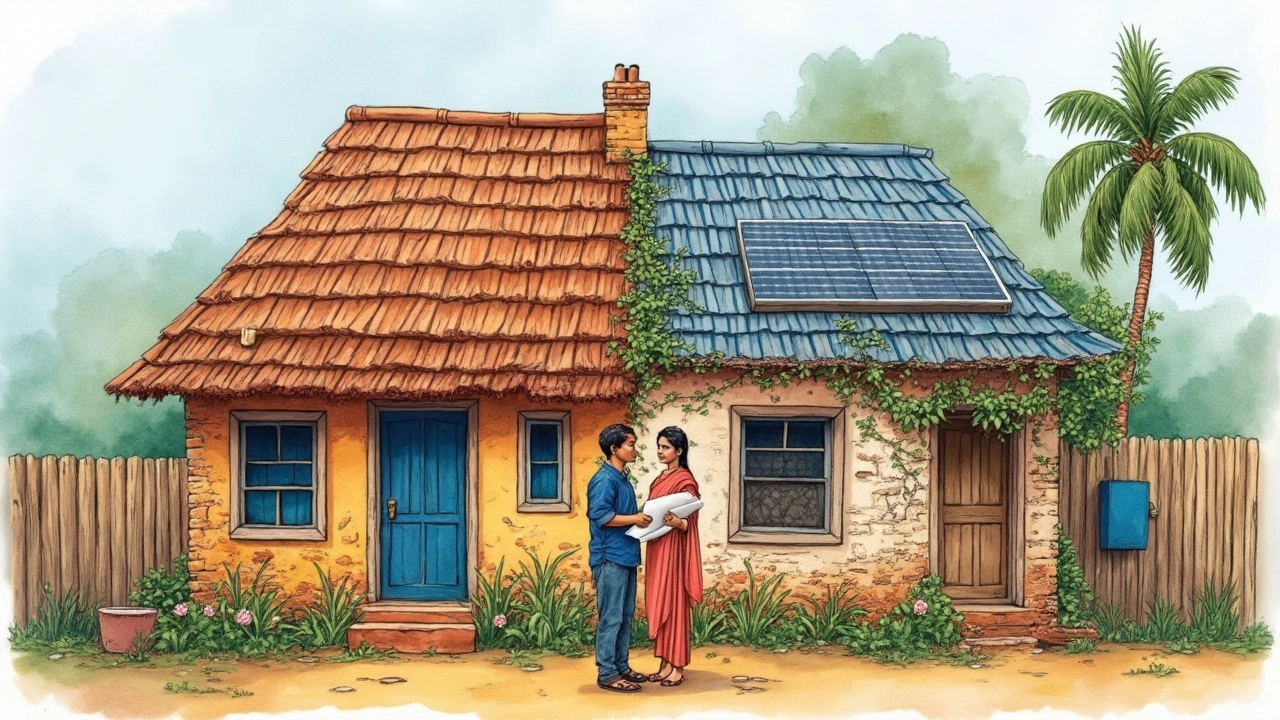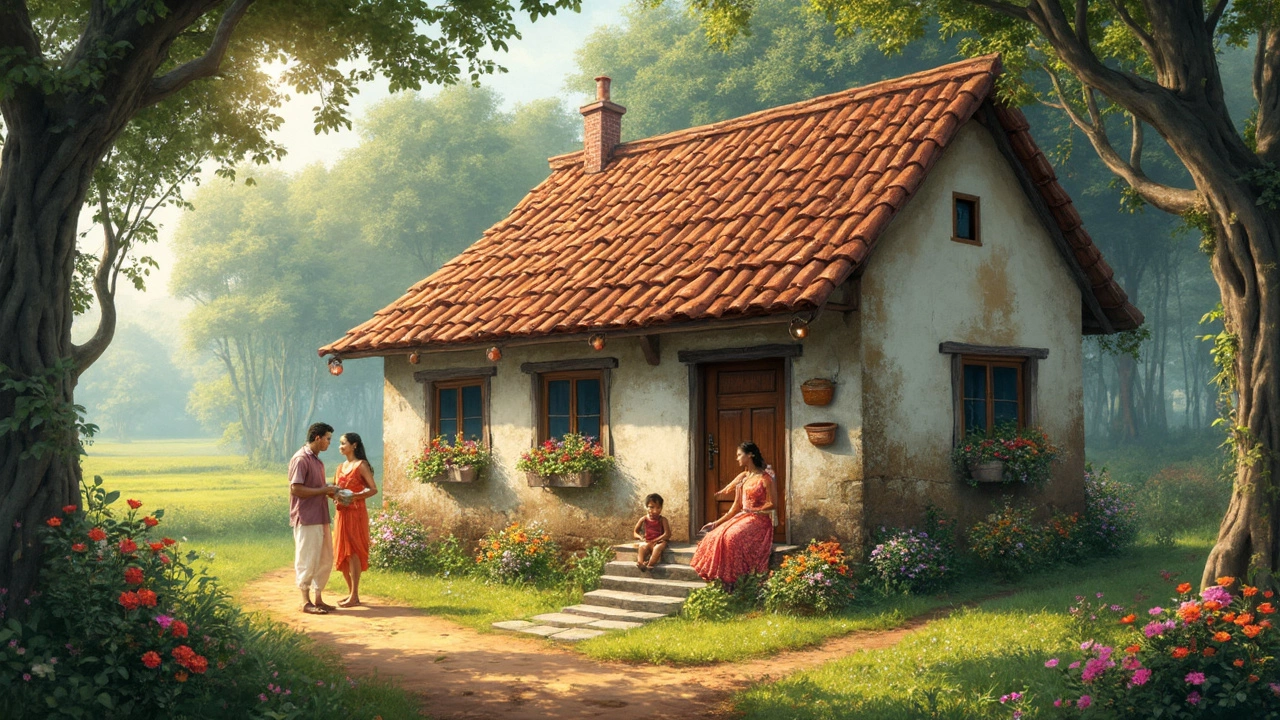Ask five people what a cottage is, and you’ll get five different answers. Some picture a tiny house with a garden and chickens, others think of an old stone place with a woodstove, and a few will swear it’s just another term for a holiday home. The truth is, a cottage means something a bit different depending on where you are and who you ask. I’ve seen modern builds passed off as cottages, and grand old farmhouses called something else entirely.
If you’re trying to figure out if your place fits the cottage bill, or if you really want that rural cottage vibe, there are a few things to watch for. Cottages are usually smaller than most homes around them (but not too small to be comfy). They tend to have simple, practical layouts and often sit in the thick of the countryside—sometimes with a bit of wild yard, sometimes tucked into a village. The original idea was a home that’s both affordable and functional, where you could actually live simply—not just pose for Instagram.
- Not Every Small House Is a Cottage
- Classic Features that Make a Place a Cottage
- How Location Changes the Definition
- Legal and Real Estate Rules (They Matter!)
- Tips for Finding or Creating Your Own Cottage
Not Every Small House Is a Cottage
It’s easy to call any small house a rural cottage, but that’s not how it works. You might see a pretty shed, a one-bedroom outbuilding, or a studio in someone’s backyard and think, “That’s a cottage.” But a legit cottage goes beyond just being small.
The bones matter. Most cottages are stand-alone homes, not attached to another house or plonked down in a row like townhouses. They usually have real kitchens, functional bathrooms, and space for living—even if it’s not much. Tiny homes, pods, and cabins can look cottage-like, but calling them a cottage might be stretching it if they don’t support daily life year-round.
There's also a difference in building style. True cottage homes tend to have thick walls, steep roofs, and deep-set windows. Tradition plays a big role—even new builds that try to copy the look often borrow details like window shutters or stonework from classic cottages. But if the place doesn’t feel like a proper home (think bunk beds, no plumbing, or a glorified camp setup), it probably isn’t a cottage by definition.
| Feature | Cottage | Small House |
|---|---|---|
| Use | Meant for daily, year-round living | Sometimes only for guests or seasonal |
| Kitchens & Baths | Fully functional, practical design | May have limited or makeshift plumbing |
| Style | Distinct look—pitched roof, cozy details | Can be any shape or design |
One more thing: location. A rural cottage almost always sits in a countryside spot or a village edge, not in the heart of a city or on a commercial street. You can have a city home styled like a cottage, but it never has quite the same vibe. If you’re chasing that real cottage life, don’t get tricked by size alone—look for homes built for comfort, with proper living set up, and a pinch of character from the surroundings.
Classic Features that Make a Place a Cottage
If you start looking around at what really counts as a rural cottage, a few features show up again and again. First off, cottages are almost always on the snug side. You won’t get endless hallways or a dozen bedrooms. Think simple rooms that work for daily life without any extra fuss—kitchen, living area, and bedrooms packed into a footprint that never feels over the top.
Most true cottage homes boast older materials. Stone walls, timber beams, and brick fireplaces used to be the backbone of cottage builds, and they still pop up in classic examples, especially in the UK and bits of rural America. Thatch or slate roofs? Still big selling points. This is partly about tradition, but also because people built with what they had nearby—the same stuff you’ll see in old barns in the same area.
A lot of cottages lean into quirky. Low ceilings, uneven floors, doors you have to duck for—these aren’t there for show, but because they were built by hand ages ago, usually without an architect. And windows are worth a mention: real cottages have small windows (energy was precious and glass was pricey), which can make them seem a bit dim compared to new builds. Modern "cottage-style" houses sometimes miss this, going for big glass walls, which look good but aren’t really authentic.
- Rural homes called cottages almost always come with a garden—sometimes more wild patch than manicured lawn
- Fireplaces or wood-burning stoves are almost expected, since those old stone walls get chilly in winter
- Original cottage kitchens tend to be compact, practical, and close to the main living area
- Steep, narrow stairs are normal, since the spaces are so tight
About 75% of classic cottage listings in the UK come with some kind of outbuilding—think sheds, old pigsties, or tiny barns. There’s almost always a story about what each structure was used for. That's a part of their appeal: every bit of the place worked for real rural living, not just looks.
If you want to know you’re looking at a real cottage (not just a small house with a flower box), check out the materials, the layout, and whether the place feels like it was meant for regular people to live and work in—not just hang out for a summer weekend.

How Location Changes the Definition
The word cottage means different things depending on where you are. In England, a cottage usually means an old, stone or brick house with a steep roof, sitting on the edge of a field or tucked away in a rural village. People often expect it to be at least a century old. In the US or Canada, a rural cottage could easily be a lakehouse from the 1960s or even a 1990s A-frame near the woods. In Australia, the word leans towards smaller weatherboard homes on big land—but not always old or traditional. It’s the same in Ireland and Scotland, where ‘cottage’ often still implies stone walls and a fire, but can also refer to any cozy, modest rural home.
Cottage qualifications even change between regions in the same country. For example, in the English Cotswolds, a cottage usually means golden limestone walls and slate roofs. In Cornwall, you get granite and whitewashed walls. Head north to Scotland and you’ll see cottages covered in rough-cast render, often with just two or three small rooms. In Canada, most people think of wooden lakeside cottages and don’t care much about age—as long as it’s charming and by the water.
Here's a quick breakdown of what counts as a cottage in different countries:
| Country | Main Cottage Style | Typical Location |
|---|---|---|
| England | Stone or brick, old with steep roofs | Rural villages or countryside |
| Ireland/Scotland | Stone walls, simple rooms, often thatched or slate roofs | Rural, often remote |
| US/Canada | Wood, sometimes modern builds | Lakesides, forests, countryside |
| Australia | Timber/weatherboard, often newer | Farmland or bushland |
The only common ground? A cottage is almost never in the middle of a busy city. Its surroundings—fields, woods, coasts, or hills—are just as much part of the deal as the house itself. So if you want the real rural cottage vibe, focus as much on the location as you do on beams or fireplaces. Just being small isn’t enough—the right setting makes the difference.
Legal and Real Estate Rules (They Matter!)
This is where things get tricky for anyone hoping for the real rural cottage dream. Legal and real estate rules can decide whether a house is actually recognized as a cottage or just called one for fun. Agents toss the word around to sell everything from big countryside homes to tiny bungalows, but official definitions matter, especially if you’re buying, selling, or renovating.
In the UK, for example, ‘cottage’ isn’t a strict legal category in land registry paperwork, but local planning laws might be strict about what you can change or build. A true rural cottage could even be in a conservation area or have a listed building status—messing with renovations may need special permissions. In Canada, realtors are quick to call anything with a lake view a ‘cottage,’ yet some areas use ‘cabin’ or ‘camp’ instead, and local zoning codes can rule how you use the property. Across the US, a cottage often gets lumped in with ‘single family home’ for legal stuff, unless it’s in a historic district or part of a cottage community development.
Practical stuff to look for when you get serious about a rural cottage:
- Check planning restrictions: Some areas limit new builds or major changes (thatched roofs and quirky windows might be protected).
- Understand local zoning: Certain rural spots only allow homes to be lived in part time, especially in vacation-heavy regions.
- Energy rules: Old cottages don’t always meet modern energy codes, and upgrading can get expensive if you’re forced to do insulation or wiring.
- Identify property boundaries: Especially in rural spots, lines can be fuzzy or based on old stone walls—don’t guess!
- Septic systems and water rights: Older cottages might use wells or septic tanks, which come with their own real estate hoops to jump through.
If you’re buying a rural cottage, get a solid survey and ask about all official restrictions—councils and county offices usually have info online. Here’s a snapshot of how ‘cottage’ is treated by region:
| Country | Real Estate Use of 'Cottage' | Legal Status |
|---|---|---|
| UK | Common for rural, small homes; listed properties protected | No separate title, planning rules apply |
| Canada | Anything rural, lakeside; called 'cabin' elsewhere | Subject to local zoning |
| USA | Marketed as cozy rural living | Usually classified as 'single family home' unless historic |
Don’t just go by what the real estate agent says—actual legal standing makes a big difference, especially if your dream includes renovation or rental plans.

Tips for Finding or Creating Your Own Cottage
If you're daydreaming about escaping to a rural cottage or want to fix up a country home, you need to think beyond just looks. Finding or creating an actual cottage comes down to location, size, style, and a few details that make all the difference. Here’s what to watch out for when you’re on the hunt or rolling up your sleeves for a renovation.
- Mind the footprint. Most cottage homes are under 1,500 square feet (about 140 square meters). That small size not only adds charm but also makes heating and maintenance a lot cheaper.
- Check the location first. Real cottages live in the countryside, on village edges, or tucked away by lakes or fields. A small house in the middle of a city rarely passes for a true rural cottage.
- Look for character, not just age. Original wooden beams, stone walls, and quirky windows are genuine signs, but even new-builds can have that cottage vibe if they use local materials and keep it simple.
- Take the garden seriously. A real cottage almost always comes with some kind of garden – wild, vegetable, or at least a few flower beds. It’s part of the traditional lifestyle and frankly, the fun.
- Legal stuff counts. Some rural areas come with building rules about what’s considered a cottage. For example, in the UK and Ireland, a listed cottage can’t be changed without strict permission. Real estate agents will know the local deal.
Quick reality check: prices for a rural cottage are all over the map. Here’s a snapshot from spring 2025:
| Country | Average Cottage Price (USD) |
|---|---|
| United Kingdom | $325,000 |
| Canada | $410,000 |
| Ireland | $285,000 |
| USA (rural Midwest) | $175,000 |
If you’re building from scratch, keep it practical. Use local materials, don’t over-complicate the layout, and put effort into insulation. Old windows look cool but can bleed heat; swapping them out for double-glazed versions can save you a bundle in energy bills, and you still get the look if you go with classic frames.
Finally, visit before you buy. Take notes about road access (those country lanes can flood, trust me). Bring someone who knows about foundations and rooflines, especially if the place hasn’t been updated since the 1960s. It’s way more fun to restore a cottage when you don’t have surprise expenses at every turn.
